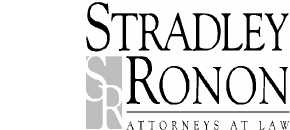
2600 One Commerce Square
Philadelphia, PA 19103-7098
T: (215) 564-8099
F: (215) 564-8120
July 24, 2008
Via EDGAR Transmission
James O’Connor
U.S. Securities and Exchange Commission
Division of Investment Management
100 F Street, N.E.
Washington, D.C. 20549
| Re: | Optimum Fund Trust |
| | File Nos. 333-104654/811-21335 |
Dear Mr. O’Connor:
On behalf of the Optimum Fund Trust (the “Registrant”), the following are the Registrant’s responses to the comments of the staff (the “Staff”) of the U.S. Securities and Exchange Commission (the “SEC”), which were received on July 14, 2008 with respect to the Registrant’s Post-Effective Amendment No. 7 (the “Amendment”) filed on May 30, 2008 pursuant to Rule 485(a) under the Securities Act of 1933, as amended (the “1933 Act”). Each Staff comment is summarized below, followed by the Registrant’s response to the comment. The Registrant’s responses to the SEC staff’s comments will be incorporated into the Registrant’s filing made pursuant to Rule 485(b) under the 1933 Act no later than July 29, 2008.
1.Comment: With respect to both the Optimum Small-Mid Cap Growth and the Optimum Small-Mid Cap Value Funds, define the capitalization range of the indices that are cited in the risk/return summary as proxies for small cap and mid cap stocks.
Response: The following disclosure will be added after the third sentence in the first paragraph under “What are the Fund’s main investment strategies?”:
Small-Mid Cap Growth Fund:
“As of June 30, 2008, the Russell 2000 Growth Index had a market capitalization range between $91 million and $3.9 billion, and the Russell MidCap Growth Index had a market capitalization range between $755 million and $20.5 billion. The market capitalization range for these Indices will change on a periodic basis.”
Small-Mid Cap Value Fund:
“As of June 30, 2008, the Russell 2000 Value Index had a market capitalization range between $56 million and $3.9 billion, and the Russell MidCap Value Index had a market capitalization range between $755 million and $18.2 billion. The market capitalization
James O’Connor
July 24, 2008
Page 2 of 3
range for these Indices will change on a periodic basis. The market capitalization range for these Indices will change on a periodic basis.”
2.Comment. With respect the Optimum International Fund, explain what constitutes “non-U.S. securities” for purposes of the Fund’s foreign investments.
Response. The first paragraph under “What are the Fund’s main investment strategies?” will be revised as follows:
“The Fund invests primarily in non-U.S. securities, including securities of issuers located in emerging markets, but, in any event, will invest at least 65% of its net assets in non-U.S. securities. The Fund considers non-U.S. securities to include those securities issued by companies: (i) whose principal securities trading markets are outside the U.S.; (ii) that derive 50% or more of their total revenue from either goods or services produced or sales made in markets outside the U.S.; (iii) that have 50% or more of their assets outside the U.S.; (iv) that are linked to non-U.S. dollar currencies; or (v) that are organized under the laws of, or with principal offices in, a country other than the U.S. The Fund does not limit its investments to issuers within a specific market capitalization range.”
3.Comment. In the paragraph describing “portfolio turnover” in each Fund’s risk/return summary, clarify that portfolio turnover will result in the realization of substantial gains that may be taxed at ordinary income rates.
Response. The portfolio turnover sections in the risk/return summary for each section will be revised as follows:
“High portfolio turnover may result in increased transaction costs to the Fund, which may result in higher Fund expenses, could reduce investment returns and may generate taxes for shareholders on realized investment gains.”
4.Comment. Include a statement that although Class B and Class C Shares’ expenses may be higher in the short-term, these share classes may be cheaper than Class A Shares’ expenses in the long-term.
Response. The Registrant respectfully declines to accept this comment.
5.Comment. Jeffrey Gundlach’s biography under the “Sub-advisers and portfolio managers” section of the Registrant’s prospectuses states that he attended Yale University as a Ph.D. candidate. Confirm that he earned his Ph.D.
James O’Connor
July 24, 2008
Page 3 of 3
Response. Mr. Gundlach did not earn a Ph.D. Accordingly, the reference to his attendance at Yale as a Ph.D. candidate will be removed.
***
Please do not hesitate to contact me at the above number if you have any questions or wish to discuss any of the responses presented above.
Sincerely yours,
/s/Jonathan M. Kopcsik
Jonathan M. Kopcsik
| cc: | A.G. Ciavarelli
Delaware Investments
Bruce G. Leto |
| |
